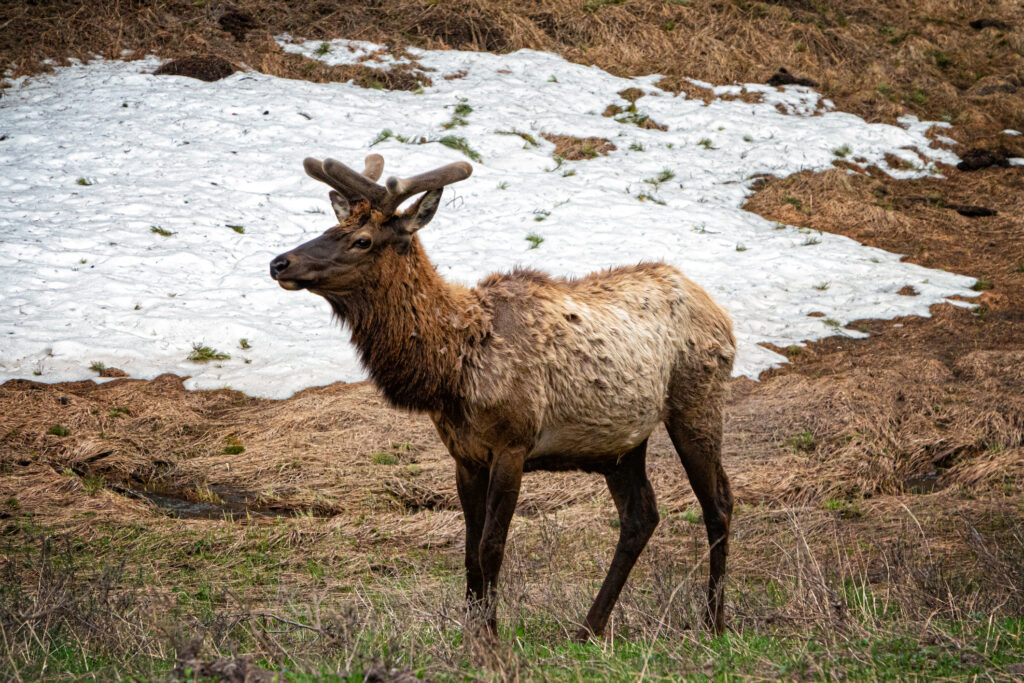With longer days in the Greater Yellowstone Ecosystem, growth is starting, but not in the way you might expect. Grass, tree buds, and flowers all have another month or so to go before we see any visible signs of growth. It is bull elk who are starting to grow their impressive antlers!
Elk antlers are truly a marvel of nature. Each April, rising testosterone levels trigger this rapid bone development. Covered in a soft, velvety layer, their antlers grow at an astonishing rate, sometimes several inches per week. Skin on the outside of the developing antler is rich in blood vessels and provides essential nutrients for rapid bone growth, the velvety fur provides insulation for the thin skin.
“The process of antler growth is one of the fastest rates of tissue growth known in mammals,” confirms the National Park Service. This incredible feat requires a massive intake of calcium and minerals, highlighting the elk’s remarkable adaptation to their environment. (Source: National Park Service)
The amount of growth depends on genetics and the age of the bull. The antlers of a typical, healthy bull are 55-60 inches long, just under six feet wide, and about 30 pounds per pair. For yearling bulls, the antler-growing period is about 90 days, while for mature bulls it’s about 140 days. That is a lot of growth in a short amount of time!
So what happens after the antlers are fully grown? The velvet-covered skin becomes dry and itchy, and since the antler is finished growing the blood flow is no longer necessary in the summer months (second half of August for Elk, first half of September for deer and moose). Elk will often use trees and vegetation to rub the velvet off. This can be a relatively quick process. Next, males will spend ample time sparring with other bulls and sharpening their antler tines on trees and shrubs in preparation for the fall rut (mating season). (Source: U.S. Fish & Wildlife Service)
During April especially, elk will start to move around in search of more nutrients to support this incredible growth. This migration provides excellent opportunities for wildlife viewing, and our expert guides at Wildlife Expeditions are adept at locating these special animals. While you won’t see the antler growth with your naked eye, a Grand Teton National Park tour will give you a chance to see the increased behavior of these animals after a long winter. Book today!


